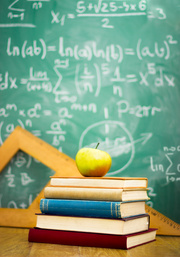When delving into the realm of statistics, the concept of critical value plays a pivotal role and holds paramount significance. The critical value is a fundamental statistical concept that aids in making informed decisions about hypotheses testing, confidence intervals on a population-based sample of data, etc.
The critical value serves as a guiding threshold for hypothesis testing and other statistical analyses. It helps statisticians make accurate conclusions based on data, ensuring the reliability of their findings.
In this blog, we will explore what critical value is. We will elaborate on its definition, its various types, and calculation methods as well as we will address some illustrative examples to grasp its practical implications.
Defining Critical Value:
The critical value is a threshold or boundary in statistical hypothesis testing that helps us decide whether to reject the null hypothesis or not. It is determined by the desired significance level (α), which represents the probability of making a Type I error (incorrectly rejecting a true null hypothesis).
Critical values define the boundary between accepting or rejecting the null hypothesis. At its core, a critical value is a point beyond which a statistical test becomes significant.
The null hypothesis usually denoted as H0, suggests that there is no significant difference or effect. However, researchers often aim to challenge this hypothesis with an alternative, suggesting a difference exists.
Types of Critical Values:
1. F-Critical Value:
The F-critical value is crucial in the analysis of variance (ANOVA) and regression analysis. This sort of critical value finds whether to reject/fail to reject the null hypothesis in a hypothesis test involving the variances.
It is usually represented using the notation Fα, df1, df2, and here α is the level of significance while df1, and df2 represent the degree of freedom for the denominator and nominator respectively.
2. T-Critical Value:
The T-critical value is employed in hypothesis testing for small sample sizes when the population standard deviation is unknown. It helps determine whether the sample mean differs significantly from the population mean.
3. Z-Critical Value:
The Z-critical value is applied in cases where the sample size is large and the data follows a normal distribution. It’s commonly used for proportions and means.
4. Chi-Square Critical Value:
The Chi-square critical value is used in tests of independence and goodness-of-fit tests. It assesses the association between categorical variables.
Calculating Critical Values:
The calculation of a critical value depends on several factors including the level of significance (α) degrees of freedom and the type of statistical test being conducted. For instance, in a Z-test, the critical value can be found using standard normal distribution tables. Several factors impact the critical value, including the chosen significance level; the test type (one-tailed or two-tailed), and the sample size. Adjusting these factors can lead to different critical values.
- F-Score Calculation: The calculation involves degrees of freedom for the numerator and denominator. Researchers use statistical tables or software to find the F-critical value corresponding to the chosen alpha level.
- T-Score Calculation: The calculation also relies on degrees of freedom. As with the F-critical value, tables or software provide the necessary T-critical value based on the alpha level. When working with small sample sizes or when the population standard deviation is unknown, the T-distribution is used to compute the critical values. This is common in scenarios where data does not meet the assumptions of a normal distribution.
- Z-Score Calculation: Critical values are often written in the form of Z-Scores for a normal distribution. Z-Scores assist to compute the exact point that lies on that sort of distribution curve beyond which are rejected the null hypothesis. Unlike the previous critical values, the Z-critical value corresponds directly to the chosen alpha level. Researchers use the standard normal distribution table or software to find it.
- Chi-Square Score Calculation: Degrees of freedom are crucial here as well. Researchers determine the Chi-square critical value by referring to statistical tables or utilizing the software.
Real-Life Examples:
Example 1: Drug Efficacy
Suppose a pharmaceutical company develops a new drug claiming it reduces cholesterol by a significant amount. To test this, a sample of patients is taken, and their cholesterol levels after taking the drug are measured. By comparing the sample mean to the critical value, researchers determine whether the drug’s effect is statistically significant.
Example 2: Election Polling:
In political polling; critical values play a role in determining the margin of error. A sample of voters is taken, and their preferences are recorded. By calculating the confidence interval using the critical value, analysts can estimate the range within which the actual voter preferences lie.
Calculations:
Example 1: T-Test Critical Value for Drug Efficacy:
Consider a sample of 30 patients with hypertension selected. Determine whether the mean reduction in blood pressure after taking the drug is statistically significant at a 95% confidence level. The sample mean is 8mmHg, and the population standard deviation is unknown.
Solution:
Step 1: Given data
Sample mean (x̄) = 8 mmHg (reduction in blood pressure)
Sample size (n) = 30
Significance level (α) = 0.05 (95% confidence level)
Degrees of freedom (df) = n – 1 = 30 – 1 = 29
Step 2:
Since we are dealing with a small sample size and unknown population standard deviation, we will use the t-distribution to find the critical value.
We can find the t-critical value for a two-tailed test with 29 degrees of freedom at a 0.05 significance level with the help of a t critical calculator which gives approximated result ± 2.045
Step 3: The formula for the t-test statistic is:
t = (x̄ – μ) / (s / √n) (μ is the hypothesized population mean)
Let’s say the hypothesized population mean is 0 (no reduction in blood pressure under the null hypothesis) and the sample standard deviation is 5.
t = (8 – 0) / (5 / √30) ≈ 7.75
Since the calculated t-test statistic (7.75) is greater than the t-critical value (±2.045), we reject the null hypothesis. This suggests that the drug’s effect on reducing blood pressure is statistically significant.
This example illustrates how critical values are used in different types of statistical tests to determine the significance of results and make informed decisions about hypotheses.
Example 2: Election Polling
Imagine there’s an upcoming mayoral election in the city of Techville. A polling agency decides to conduct a poll to predict which candidate is leading.
Solution:
Step 1: Sample Size and Observed Proportion:
The agency samples 1,000 registered voters and finds that 520 voters (or 52%) prefer Candidate A while the remaining 480 voters (or 48%) prefer Candidate B.
Step 2: Determine a Confidence Level:
The agency wants to be 95% confident in their result. For a 95% confidence level, the critical value (z-value) is approximately 1.96 (this value comes from z-tables which relate to the standard normal distribution).
Step 3: Calculating the Margin of Error (MOE):
- The standard error (SE) for a proportion can be calculated as:
SE=sqrt[p(1−p)/n]
- Using the observed proportion for Candidate A (p = 0.52), the SE = sqrt[0.52 x 0.48 / 1000] ≈ 0.0158.
- The Margin of Error (MOE) = Critical Value x SE, so MOE = 1.96 x 0.0158 ≈ 0.031.
Step 4: Confidence Interval:
- The lower bound of the confidence interval = 0.52 – 0.031 = 0.489 or 48.9%
- The upper bound of the confidence interval = 0.52 + 0.031 = 0.551 or 55.1%
Step 5: Interpretation:
Given the results, the polling agency would say they are 95% confident that the true proportion of voters who prefer Candidate A lies between 48.9% and 55.1%. This means that if multiple samples were taken and the confidence interval calculated in the same way for each, about 95% of the intervals would contain the true proportion of voters supporting Candidate A.
In this example, the critical value (1.96) played a vital role in determining the margin of error, which in turn helped construct the confidence interval for voter preference.
Conclusion:
We can conclude the whole blog as critical values play an essential role in the field of statistics assisting researchers and analysts in making decisions based on statistical tests. In this article blog, we have addressed the concept of critical value, its definition, and types as well as we have examined important calculations to apprehend the concept of critical value.
Hopefully, having a solid understanding of this blog empowers you to draw meaningful insights from data and you will be able to make well-informed choices. you will also be able to compare test statistics to critical values. you can also determine whether your results are statistically significant or if they fall within the realm of chance.
Source Materials:
Additional Educational Articles:








